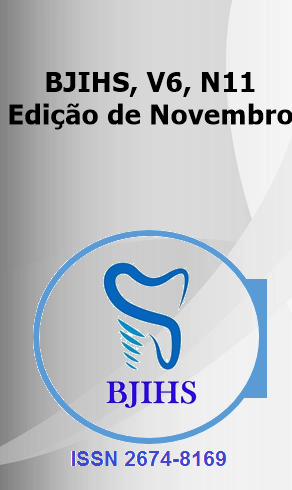Abstract
Dear Editors,
The article "Screening and Diagnosis of Cervical Cancer through the Pap Smear Test: Factors Associated with Knowledge and Prejudice" explores the barriers to adherence to the Pap smear test in Brazil, highlighting factors such as low education levels, lack of knowledge, and cultural prejudices that interfere with the performance of this crucial exam for the prevention of cervical cancer. The study emphasizes that despite efforts to promote the Pap smear as an accessible and effective tool in preventing cervical cancer, many women still lack awareness of its importance. This lack of awareness is exacerbated by social and emotional obstacles, including fear of the procedure, lack of perception about the severity of the disease, and discomfort with body exposure during the exam. Moreover, cultural prejudices and taboos about gynecological health reinforce the stigma surrounding the exam, causing some women to avoid it, especially in communities where access to information is limited and intimate health topics are rarely discussed openly. In light of this scenario, the study underscores the need for comprehensive public policies that go beyond offering the exam and focus on health education programs aimed at informing women about the importance of the Pap smear. (RONNER, F. et al. 2024).
The issue addressed is corroborated by research in various contexts, examining the challenges of cervical cancer control in South America, emphasizing that socioeconomic and cultural barriers are common and hinder screening adherence. These studies reinforce the need for strategies that connect health services and the community to expand exam coverage (CERQUEIRA, R. S. et al. 2022). Furthermore, analyses of cervical cancer mortality trends in specific regions show that despite existing health policies, Pap smear coverage is still insufficient in more vulnerable areas due to factors such as lack of access to information and quality health services. (LUIZAGA, C. T. DE M. et al. 2023). The role of Primary Health Care (PHC) is highlighted as essential to increase exam adherence, as PHC can foster a closer relationship with patients and promote a routine of preventive care. These studies indicate that although the Pap smear is widely available, there is a significant gap in its coverage, especially in low-income regions and among groups with lower education levels. (FERREIRA, M. DE C. M. et al. 2022).
It is crucial to reinforce the importance of active outreach to increase adherence to the Pap smear test, as this strategy allows health professionals to directly approach the community to identify and guide women who, for various reasons, do not regularly undergo preventive exams. Active outreach is particularly effective because it goes beyond passive waiting in health services, bringing care to the places where women live, such as homes and community centers, and providing personalized guidance about the exam, which is essential for communities where access to information and health services is limited. Thus, active outreach can be enhanced with the use of educational materials, such as infographics, that visually and accessibly summarize the benefits of the exam and address common doubts and concerns. By delivering these materials directly to women, health agents can clarify the exam, explaining its crucial role in the early detection of lesions that can lead to cervical cancer. This direct contact allows professionals to address fears and prejudices, providing clear information about the procedure and creating a more welcoming and less intimidating environment for women who might otherwise avoid the exam due to misinformation, shame, or fear. Initiatives to collect data to identify women of screening age, combined with the creation of infographics and active outreach with home visits, have great potential to transform the number of Pap smear test adherences. By promoting a broad understanding of the importance of the exam and strengthening the bond between women and PHC, it contributes to significantly reducing the incidence and mortality of cervical cancer, promoting a positive impact on the nation's public health.
References
CERQUEIRA, R. S. et al. Controle do câncer do colo do útero na atenção primária à saúde em países sul-americanos: revisão sistemática. Revista Panamericana de Salud Pública, v. 46, p. 1, 18 ago. 2022. Disponível em: https://iris.paho.org/handle/10665.2/56249
FERREIRA, M. DE C. M. et al. Detecção precoce e prevenção do câncer do colo do útero: conhecimentos, atitudes e práticas de profissionais da ESF. Ciência & Saúde Coletiva, v. 27, p. 2291–2302, 27 maio 2022. Disponível em: https://www.scielo.br/j/csc/a/Z3tXcyhpMP6MLcJzTCmq9bn/
LUIZAGA, C. T. DE M. et al. Recent changes in trends of mortality from cervical cancer in Southeastern Brazil. Revista de Saúde Pública, v. 57, p. 25, 17 abr. 2023. Disponível em: https://www.scielo.br/j/rsp/a/6PQcPnwxLtjbrwvCzxFJmMr/
RONNER, F. et al. Rastreamento e diagnóstico do Câncer de colo do útero pelo exame citológico de Papanicolau: fatores associados ao conhecimento e preconceito. Brazilian Journal of Implantology and Health Sciences, v. 6, n. 3, p. 1213–1224, 14 mar. 2024.

This work is licensed under a Creative Commons Attribution 4.0 International License.
Copyright (c) 2024 Gabriela Cenci Peters, Julya Moreto Rocha , Chaiana Esmeraldino Mendes Marcon , Vanessa Venancio da Silva , Camille Martins

